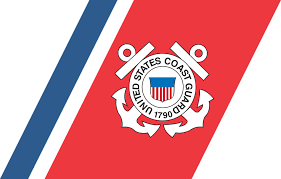

Current Location: 23.2N, 78.5W
Geographic Reference: 215 miles ESE of Key West, FL
Movement: West-northwest at 14 mph
Max Winds: 30 mph gusting to 40 mph
Current Hurricane Severity Index: 0 out of a possible 50 points (0 size, 0 intensity)
Max Predicted Hurricane Severity Index: 3 out of a possible 50 points (1 size, 2 intensity)
Current Radius of Tropical Storm-Force Winds: 0 miles
Max Predicted Radius of Tropical Storm-Force Winds: 60 miles
Organizational Trend: Slowly Becoming Better-Organized
Forecast Confidence: Average
Chance of Development: 90 percent
Key Points
1. Disturbance 30 is expected to become a tropical depression tomorrow afternoon or evening.
2. The system is not expected to become more intense than a weak to moderate tropical storm.
3. Regardless of tropical development, the main impact over land will be heavy rain across south Florida and along the central Gulf Coast.
Our Forecast
Disturbance 30 still lacks a well-defined surface center. During the next 24 hours, we expect a well-defined surface circulation to form. This will likely occur once the disturbance has moved past the Florida Keys and into the southeast Gulf of Mexico. Once a center forms, we expect a west-northwest to northwest motion to occur. This should take the system toward southeast Louisiana by Tuesday night. After it moves onshore, there should be a significant decrease in the forward speed, along with a turn more to the west. This could allow for locally heavy rains to occur over Louisiana and possibly into northeast Texas.
Environmental conditions are not expected to be overly favorable for intensification in the Gulf of Mexico. Thus, we only indicate gradual intensification. There are no indications from the global forecast models that the system will intensify beyond a weak to moderate tropical storm. Winds are forecast to be 45 mph at landfall. After landfall, weakening should occur quickly.
It should be noted that the heavy rains are likely to persist even after the system weakens to a remnant low. A map of the projected rainfall totals has been attached to this advisory.
Expected Impacts on Land
Southern Mississippi Through Northeast Texas: Locally heavy rainfall could result in street flooding that leads to travel delays Tuesday afternoon through Friday. The greatest risk for southeast Louisiana and southern Mississippi will be Tuesday and Wednesday, while the risk for Texas will mainly be Friday.
Expected Impacts Offshore
Squalls will begin reaching the deepwater areas off the southeast Louisiana coast by Tuesday morning, meaning the last full day for any helicopter evacuations of offshore personnel will be Monday. Wind gusts in squalls could reach up to 65 mph on Tuesday, along with locally very rough seas.
Our next advisory will be issued by 4 AM EDT / 3 AM CDT.
Meteorologist: Derek Ortt
![]()
| Forecast Confidence: Average | Hurricane Severity Index | ||||||||
|---|---|---|---|---|---|---|---|---|---|
| Fcst Hour | Valid | Lat. | Lon. | Max Sustained Winds | Max Gusts | Category | Size | Intensity | Total |
| 0 | 9PM CDT Sun Sep 02 | 23.20N | 78.50W | 30 mph | 40 mph | Tropical Disturbance | 0 | 0 | 0 |
| 12 | 9AM CDT Mon Sep 03 | 24.50N | 81.50W | 30 mph | 40 mph | Tropical Disturbance | 0 | 0 | 0 |
| 24 | 9PM CDT Mon Sep 03 | 26.00N | 85.00W | 35 mph | 45 mph | Tropical Depression | 0 | 1 | 1 |
| 36 | 9AM CDT Tue Sep 04 | 27.50N | 88.00W | 40 mph | 50 mph | Tropical Storm | 1 | 1 | 2 |
| 48 | 9PM CDT Tue Sep 04 | 29.20N | 89.70W | 45 mph | 60 mph | Tropical Storm | 1 | 2 | 3 |
| 60 | 9AM CDT Wed Sep 05 | 30.60N | 91.30W | 35 mph | 40 mph | Tropical Depression | 0 | 1 | 1 |
| 72 | 9PM CDT Wed Sep 05 | 31.70N | 92.50W | 30 mph | 35 mph | Tropical Depression | 0 | 0 | 0 |
| 84 | 9AM CDT Thu Sep 06 | 32.50N | 93.80W | 30 mph | 35 mph | Remnant Low | 0 | 0 | 0 |
| 96 | 9PM CDT Thu Sep 06 | 32.70N | 95.00W | 30 mph | 35 mph | Remnant Low | 0 | 0 | 0 |
| 108 | 9AM CDT Fri Sep 07 | 33.00N | 96.00W | 30 mph | 35 mph | Remnant Low | 0 | 0 | 0 |
The yellow cone represents track error from the previous five hurricane seasons. Over the past five hurricane seasons, the center of the storm tracked within the yellow cone 75% of the time. The cone does not represent the forecast uncertainty in the current advisory for this storm. In addition, hurricane-force winds, very high tides, large waves, and heavy rainfall can often extend well outside the yellow cone.



